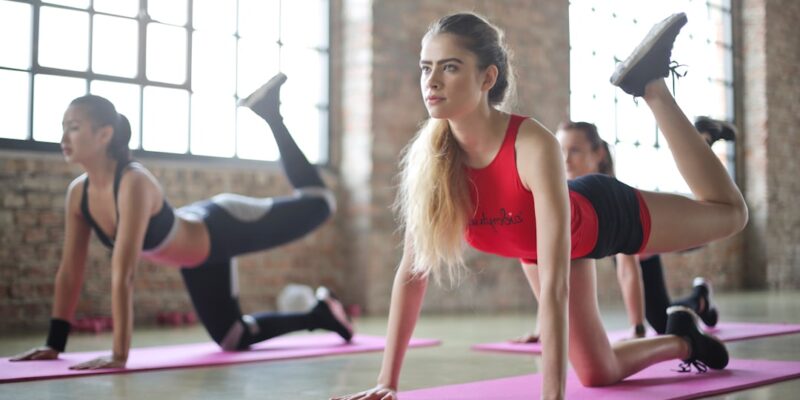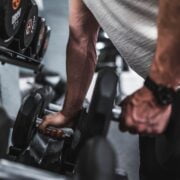
How to Exercise in the Morning: A Quick Home Workout
Exercise is an essential component of a healthy lifestyle. Not only does it help you maintain a healthy weight, but it also has numerous benefits for your overall health and well-being. Regular exercise can improve your cardiovascular health, boost your mood, increase your energy levels, and even help you sleep better. One of the best times to incorporate exercise into your daily routine is in the morning. In this article, we will explore the benefits of morning exercise and provide tips on how to set up a home workout space, warm-up exercises, cardiovascular exercises, strength training exercises, core exercises, stretching exercises, incorporating HIIT into your routine, staying motivated and consistent, cooling down, and preparing for the day ahead.
Key Takeaways
- Morning exercise can improve mood, energy levels, and overall health.
- Setting up a home workout space can be simple and cost-effective.
- Warm-up exercises are important to prevent injury and prepare the body for exercise.
- Cardiovascular exercises like running or jumping jacks can boost heart rate and improve endurance.
- Strength training exercises like squats and push-ups can help build muscle and increase metabolism.
Benefits of Morning Exercise
Exercising in the morning has several advantages that can set the tone for the rest of your day. One of the main benefits is increased energy levels. When you exercise in the morning, you are jump-starting your metabolism and getting your blood flowing. This can help you feel more awake and alert throughout the day. Additionally, morning exercise has been shown to improve mood and reduce stress levels. When you exercise, your body releases endorphins, which are natural mood boosters. Starting your day with a workout can help you feel more positive and ready to take on whatever challenges come your way.
Another benefit of morning exercise is improved sleep quality. Regular physical activity can help regulate your sleep patterns and promote better sleep at night. When you exercise in the morning, you are giving your body ample time to wind down and relax before bedtime. This can lead to deeper and more restful sleep, allowing you to wake up feeling refreshed and rejuvenated.
Setting Up Your Home Workout Space
Creating a designated workout space at home is essential for staying motivated and consistent with your exercise routine. The first step is to choose the right equipment for your needs and budget. If you are just starting out, you may not need much equipment at all. Bodyweight exercises can be highly effective and require no equipment. However, if you prefer to use equipment, consider investing in a few key pieces such as dumbbells, resistance bands, or a yoga mat.
Once you have chosen your equipment, find a designated area in your home where you can set up your workout space. It could be a spare room, a corner of your living room, or even your backyard. Make sure the area is well-ventilated and has enough space for you to move around comfortably. Clear any clutter and create a clean and inviting space that will inspire you to exercise.
Warm-Up Exercises to Get Your Body Moving
Before diving into your workout, it is crucial to warm up your body and prepare it for the physical activity ahead. A proper warm-up can help prevent injuries and improve performance during your workout. Some simple warm-up exercises include jumping jacks, lunges, arm circles, and high knees. These exercises help increase blood flow to your muscles, loosen up your joints, and raise your body temperature.
Start with a few minutes of light cardio, such as jogging in place or jumping rope. This will get your heart rate up and warm up your muscles. Next, perform dynamic stretches that target the major muscle groups you will be using during your workout. For example, do walking lunges to stretch your legs and hips or arm circles to warm up your shoulders and upper body. Aim to spend at least 5-10 minutes on your warm-up before moving on to the main part of your workout.
Cardiovascular Exercises to Boost Your Heart Rate
Cardiovascular exercise is an essential component of any fitness routine. It helps improve heart health, burn calories, and increase endurance. There are many different types of cardiovascular exercises that can get your heart rate up and provide an effective workout. Some examples include running, cycling, swimming, jumping rope, and dancing.
If you prefer to exercise at home, there are plenty of options available. You can go for a run or bike ride in your neighborhood, use a stationary bike or treadmill, or follow along with an online cardio workout video. The key is to choose an activity that you enjoy and that gets your heart rate up. Aim for at least 30 minutes of moderate-intensity cardiovascular exercise most days of the week.
Strength Training Exercises for a Full-Body Workout
Strength training is another crucial component of a well-rounded fitness routine. It helps build lean muscle mass, increase strength and power, and improve overall body composition. Strength training exercises can be done using bodyweight, dumbbells, resistance bands, or weight machines.
To target different muscle groups, incorporate exercises such as squats, lunges, push-ups, pull-ups, and shoulder presses into your routine. Aim to perform 8-12 repetitions of each exercise for 2-3 sets. Start with lighter weights or modifications if you are a beginner and gradually increase the intensity as you get stronger.
Core Exercises for a Stronger Midsection
A strong core is essential for stability and proper posture. It helps support your spine and pelvis and improves overall functional movement. Core exercises can target your abs, obliques, lower back, and hips.
Some effective core exercises include planks, crunches, Russian twists, and bicycle crunches. These exercises engage multiple muscle groups and can be modified to suit different fitness levels. Aim to include at least 10-15 minutes of core exercises in your workout routine two to three times per week.
Stretching Exercises to Increase Flexibility
Stretching is often overlooked but is an essential part of any exercise routine. It helps improve flexibility, prevent injuries, and reduce muscle soreness. Incorporating stretching exercises into your workout can help improve your range of motion and enhance your overall performance.
Some simple stretching exercises include hamstring stretches, quad stretches, shoulder rolls, and calf stretches. Hold each stretch for 15-30 seconds and repeat on both sides. Stretching should be done after your workout when your muscles are warm and more pliable.
Incorporating HIIT (High-Intensity Interval Training) into Your Routine
High-Intensity Interval Training (HIIT) is a popular form of exercise that involves short bursts of intense activity followed by periods of rest or lower-intensity exercise. HIIT workouts are known for their efficiency and effectiveness in burning calories and improving cardiovascular fitness.
To incorporate HIIT into your routine, choose exercises that target different muscle groups and alternate between high-intensity intervals and periods of rest. For example, you could do 30 seconds of burpees followed by 30 seconds of rest, then 30 seconds of mountain climbers followed by 30 seconds of rest. Repeat this circuit for a total of 10-15 minutes.
Tips for Staying Motivated and Consistent
Staying motivated and consistent with your workouts can be challenging, especially when life gets busy. However, there are several strategies you can use to stay on track. First, set realistic goals for yourself and track your progress. Whether it’s running a certain distance or lifting a certain weight, having a goal to work towards can help keep you motivated.
Second, find a workout buddy or join a fitness community. Exercising with others can make the experience more enjoyable and provide accountability. You can also try different types of workouts to keep things interesting and prevent boredom.
Lastly, reward yourself for reaching milestones or sticking to your routine. Treat yourself to a massage or a new workout outfit as a way to celebrate your achievements.
Cooling Down and Preparing for the Day Ahead
After completing your workout, it is essential to cool down and allow your body to recover. Cooling down helps lower your heart rate, prevent dizziness, and reduce muscle soreness. Spend 5-10 minutes doing light cardio, such as walking or stretching, to gradually bring your heart rate back to normal.
Once you have cooled down, take a few minutes to prepare for the day ahead. Drink plenty of water to rehydrate your body and replenish lost fluids. Eat a balanced breakfast that includes protein, carbohydrates, and healthy fats to fuel your body and provide sustained energy throughout the day.
Incorporating morning exercise into your daily routine can have numerous benefits for your overall health and well-being. From increased energy levels and improved mood to better sleep quality and enhanced physical fitness, exercise is a powerful tool for improving your quality of life. By setting up a home workout space, incorporating warm-up exercises, cardiovascular exercises, strength training exercises, core exercises, stretching exercises, HIIT workouts, and staying motivated and consistent, you can make morning exercise a regular part of your routine. So why wait? Start reaping the benefits of morning exercise today!
If you’re looking for more fitness inspiration, check out this article on Wave Magnets: “The Benefits of Incorporating Resistance Bands into Your Workout Routine.” Resistance bands are a versatile and effective tool for adding resistance to your exercises, helping to build strength and tone muscles. Whether you’re a beginner or an experienced fitness enthusiast, incorporating resistance bands into your workout routine can take your fitness journey to the next level. Learn more about the benefits of resistance bands by clicking here.
FAQs
What are the benefits of exercising in the morning?
Exercising in the morning can help boost your metabolism, increase energy levels, improve mental clarity, and set a positive tone for the rest of the day.
What are some quick home workouts that can be done in the morning?
Some quick home workouts that can be done in the morning include bodyweight exercises such as squats, lunges, push-ups, and planks. High-intensity interval training (HIIT) workouts can also be effective and time-efficient.
How long should a morning workout be?
A morning workout can be as short as 10-15 minutes or as long as an hour, depending on your fitness level and goals. The most important thing is to be consistent with your exercise routine.
What should I eat before a morning workout?
It is recommended to eat a light snack such as a banana or a handful of nuts before a morning workout to provide energy for the workout. It is also important to stay hydrated by drinking water before and during the workout.
What are some tips for staying motivated to exercise in the morning?
Some tips for staying motivated to exercise in the morning include setting a specific goal, finding a workout buddy, creating a routine, and rewarding yourself for reaching milestones. It is also important to listen to your body and adjust your workout as needed.


















